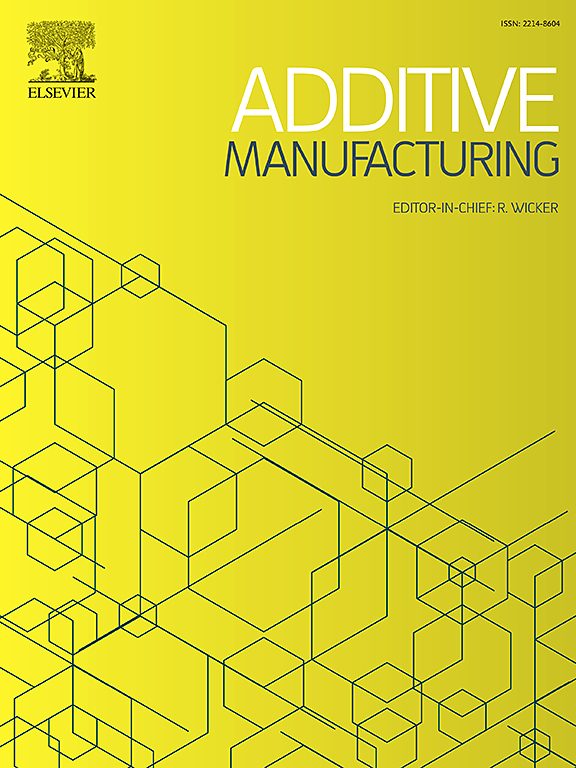Towards in situ and real time characterization of flow-induced phenomena during material extrusion of polymer composites using 3D X-ray microtomography
IF 10.3
1区 工程技术
Q1 ENGINEERING, MANUFACTURING
引用次数: 0
Abstract
This study investigates the flow-induced phenomena occurring during additive manufacturing by material extrusion of short-fiber reinforced thermoplastic composites. For that purpose, in situ interrupted and real-time printing experiments coupled with 3D synchrotron X-ray microtomography observations were conducted. Various types of composites, namely glass fiber-reinforced polyamide 6, glass-fiber reinforced polycarbonate and wood fiber-reinforced polylactic acid, as well as various nozzles were investigated. Using 3D images acquired during the static printing experiments, it was possible to quantify the evolution of several key microstructure descriptors (e.g., pore and fiber volume fractions, porosity shape and size, fiber length and orientation) in various locations in the tested nozzles. All the experiments revealed that drastic microstructural changes (e.g., pore appearance/disappearance, orientation and shortening of fibers) occurred in various zones of the nozzles during material extrusion. In addition, the results highlighted the central role of the nozzle geometry (e.g., convergent angle, output channel) on the pore formation, transport and disappearance as well as on the orientation and shortening of fibers. Besides, the 3D images acquired during the dynamic (real-time) printing experiments confirmed the observations made during the interrupted tests but also emphasized the complex kinematics of pores in the cavity of the nozzles and the mechanisms at the origin of their disappearance through the convergent. The knowledge acquired during these experiments will undoubtedly lead to the manufacturing of optimized nozzles.
求助全文
约1分钟内获得全文
求助全文
来源期刊

Additive manufacturing
Materials Science-General Materials Science
CiteScore
19.80
自引率
12.70%
发文量
648
审稿时长
35 days
期刊介绍:
Additive Manufacturing stands as a peer-reviewed journal dedicated to delivering high-quality research papers and reviews in the field of additive manufacturing, serving both academia and industry leaders. The journal's objective is to recognize the innovative essence of additive manufacturing and its diverse applications, providing a comprehensive overview of current developments and future prospects.
The transformative potential of additive manufacturing technologies in product design and manufacturing is poised to disrupt traditional approaches. In response to this paradigm shift, a distinctive and comprehensive publication outlet was essential. Additive Manufacturing fulfills this need, offering a platform for engineers, materials scientists, and practitioners across academia and various industries to document and share innovations in these evolving technologies.
 求助内容:
求助内容: 应助结果提醒方式:
应助结果提醒方式:


